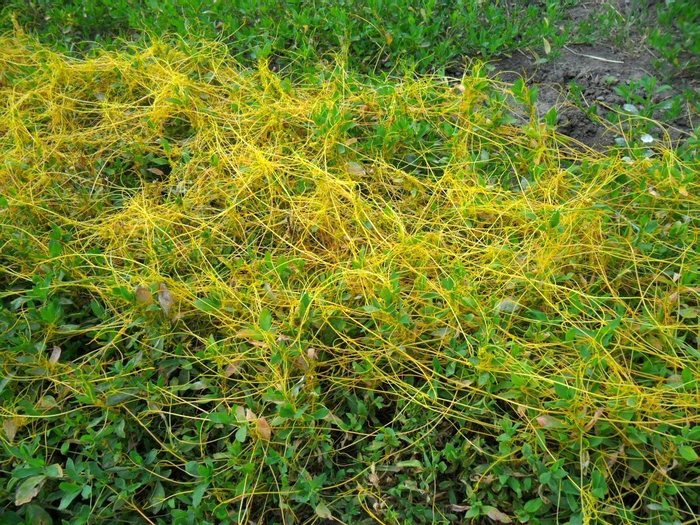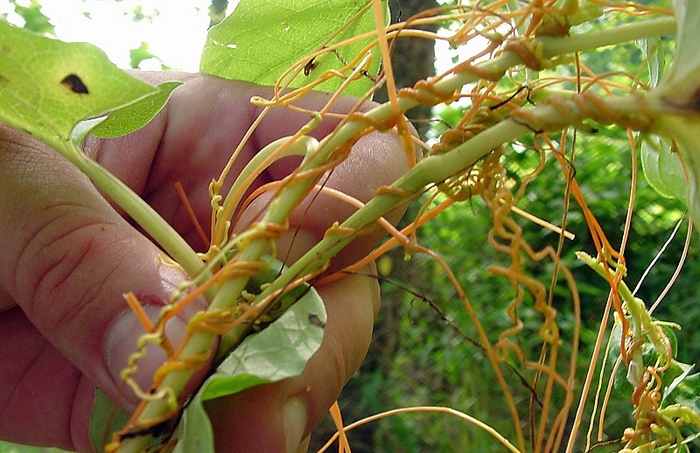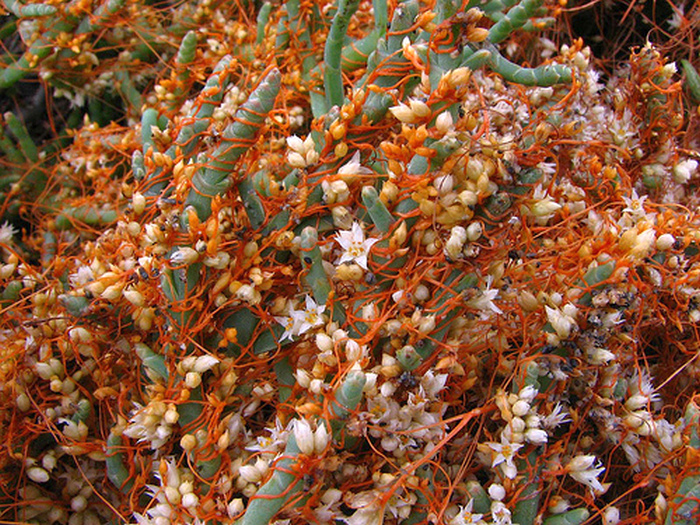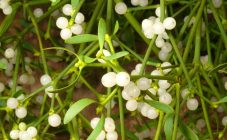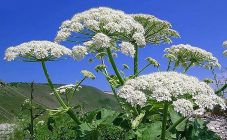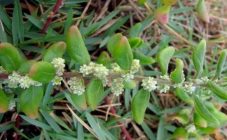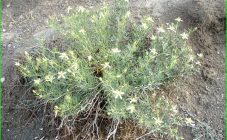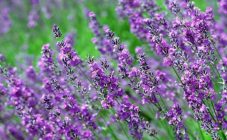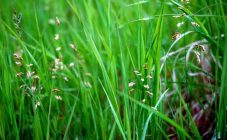Content:
Dodder herb (Latin Cūscuta) is a genus of parasitic organisms related to quarantine weeds. More than 200 species have been described that are capable of growing on many crops. The parasite changes the metabolism in plants, which makes them grow worse and die. Readers will be interested to know what dodder herb looks like and how to deal with it.
Description of the plant
This herb is a parasite without roots and leaves. The stem is filiform, sometimes resembling a cord. Its color changes from yellowish, orange to red. Dodder wraps around the host plant, penetrates it with its suckers and feeds on juices. Research shows that dodder picks up its prey by smell. Other names are grass, lady grass.
It has flowers of white or pink, rarely green. They gather in inflorescences. The fruit of the dodder is a box with flat sides. The seeds have a rough and rough surface. The embryo is spiral, bent, filiform, without a root.
Individuals affected by the parasite are subject to destruction, because they cannot be saved. Dodder masks the seeds, making them look like the seeds of cultivated plants. This increases the risk of planting a dangerous pest in the garden or garden in the spring.
Due to parasitism, dodder can grow rapidly and cover large areas. Just one seed can grow 6 square meters. m. Since an increased tissue turgor is achieved in the stems, the scraps of the stem may not fade for a long time and remain viable. This is a specific device. Grasses affected by dodder are of very poor nutritional quality and can even lead to the death of livestock. The parasite can spread viral pathologies.
The described weed contains dangerous alkaloids that can poison the body of cattle.
Below is a list of the most common weeds:
- Field dodder has filiform branching stems. They affect plants in the upper and middle parts. This species bears very abundant fruit. A large number of cultures are affected.
- Clover dodder has hair-like green or pinkish thin stems, white dense flowers. It affects herbal plants, including alfalfa.
- Clover dodder parasitizes many shrubs and herbaceous plants, as well as weeds. The herb is distinguished by branched red stems.
- Linseed dodder has unbranched greenish-succulent shoots of medium thickness. The flowers of this plant are yellow. It can attack flax, clover, bindweed, alfalfa and some weeds, including birch.
- Hop dodder possesses cord-like branching reddish-brown or dark pink stems. The flowers of this insidious plant are pink. This species is capable of parasitizing trees and bushes.
- European dodder affects vetch, clover, alfalfa, tobacco, gooseberries and currants. It has reddish stems and pink-white small flowers. It affects bindweed plants.
All varieties of this pest are equally dangerous and contribute to massive damage to plants.
How to get rid of grass
Dodder is a difficult-to-eradicate weed.Sometimes fighting it during the summer does not give a normal result. It is important to choose the right method of dealing with a pest in order to get rid of it once and for all.
Mechanical method
If common dodder appears among perennial grasses, then they must be mowed before flowering. Timely mowing makes it possible to remove it in about 95% of cases. In orchards and vineyards, affected plants are cut before flowering. All trunks are kept under "black steam". The parasitic plant should not leave seeds behind.
On row crops, you can use the manual method of control. It is necessary to remove the parasite at the earliest stages of its development, when it has not yet enveloped the entire plant. If you are late with cleaning, then the number of affected foci increases. Weeding loses its purpose if the vegetable garden is a continuous carpet.
In the area where the maximum amount of this weed is observed, it is recommended to mow all affected plants and then burn them. You can completely destroy the parasite together with the occupied plant.
Chemicals
Readers will be interested to know what causes dodder herb to die, and how to deal with it. The most radical control method is the use of herbicides during the period of the greatest weed spread. The most effective drugs are Titus, Targa, Targa-super. They penetrate the weed effectively.
The action of herbicides is aimed at the complete destruction of the weed. After a few hours, the parasite ceases to take mineral substances and water from the soil. The complete death of the dodder occurs approximately 2 weeks after the use of the herbicide.
In the case of the appearance of weed weed grasses of yellow filaments in areas of non-agricultural use, a herbicide based on isopropylamine salt of glyphosphate and imazethapyr can be applied. This preparation gives almost one hundred percent destruction of climbing weeds.
The weed-free plot of land is cultivated with a mixture of ammonium nitrate, ammonium sulfonic acid and ethylhexyl salts. It should be noted that if any plant grows on the site, then it will die along with the dodder.
Popular ways of fighting
Often, amateur gardeners are interested in what kind of poisons the parasite is afraid of, and how to get rid of it with the help of folk remedies. Unfortunately, folk remedies for weed control do not work. It's best not to waste precious time trying to get rid of it in vain. It is necessary to remove the pest by all means available for this.
Prevention of grass overgrowth
The grass grows very quickly in the garden. The seeds of the plant, which ripen by September, are well distributed by the wind and melt water. The weed is able to pass into the soil along with the humus.
It is very difficult to distinguish between dodder seeds in seed. This is especially true for sowing clover: often inexperienced farmers can sow dodder along with useful seeds.
In areas where the parasite spreads, you need to constantly weed the ground with complete removal of the weed. In this case, the earth should be well loosened. It is important to regularly carry out work related to loosening the soil, to prevent overgrowth of weeds.
It is necessary to carefully monitor the surrounding area and mow the grass in time. This will prevent the weed from producing seeds.
Dodder is a dangerous weed. In a very short time, it is able to spread over large areas and infect plants. Methods of dealing with it are laborious and are associated with regular processing of the site.Complete removal and destruction of affected plants is sometimes the most effective way to get rid of weeds.
